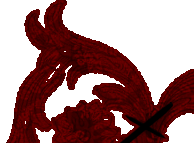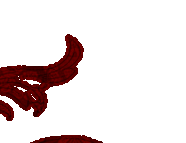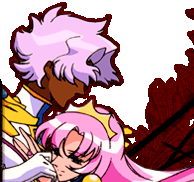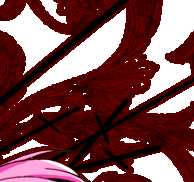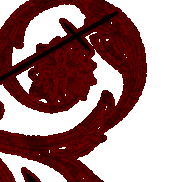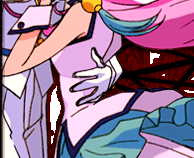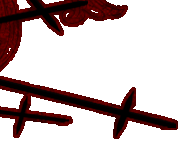
WITCHES, MAGIC, AND FAIRY TALES IN SHŌJO
This analysis
was donated by Nicole K. Toivonen Winchester.

As discussed, a key component of the genre is the transience of life as a magical girl, which endorses the premise that magical powers are acceptable as part of an interim period for enjoyed before undertaking ‘typical’ female duties.32 This premise is partially due to the popularity of Bewitched in Japan. While the 1960’s ‘witch’ housewife theme waned quickly in the United States, various cultural representations of magic translated into Japanese culture. The plot of Bewitched involved the concept of magic as female power to be renounced after marriage, which provided a discursive site for feminism and femininity to be negotiated in early American feminism. As Japan’s magical girls represented a similar challenge of and to female domesticity, they came to define the magical girl genre.33 Magic in shōjo thereby connected to the negotiation of female power, domestic duties, and sexuality. The genre takes advantage of the rhetoric of magic, which provides different and often opposing messages about women’s power, complicitly serving the larger social mechanism that generates and reconfirms conventional gender norms and compulsory heterosexuality.34 Again, this rhetoric and contradiction does the ideological work in maintaining ‘appropriate’ gender roles for girls.
Given this early connection to Bewitched, girls granted magical powers in the shōjo sense are therefore rooted in traditional European fairy tales such as Cinderella, Snow White, and Briar Rose. Catherine E. Bailey cites these tales when arguing that any adventure story dealing with the transition from girlhood to adulthood potentially “demands that woman be muted, silenced, and violated when she enters the time-line that forces her into the sexual story… such stories funnel women into one of two endings: heterosexual marriage, or death.”35 She quotes Andrea Dworkin on Western fairy tales, “There are two definitions of woman... The good woman must be possessed. The bad woman must be killed, or punished. Both must be nullified.”36 As with the figure of the phallic mother, women who resist are regarded with derision and disgust, while dutiful women who submit to the ‘natural’ progression from virgin to sexual object to wife and selfless mother are rewarded. Resistance against dominant ideologies results in branding as sexual or gender deviants, thus representation as monsters, vampires, and other threatening figures.37 Here, we see the seeds of both ‘bad women’ that must be nullified: the demonic phallic mother and the over-powerful bishōjo gone bad. Both resist; both are threatening figures that must be eliminated.
The first magical girl anime was called Sally the Witch38, about Yumeno Sally, princess of a magic kingdom who descends to the human world to explore friendship with her classmates and learn various customs and social codes in the human society. She is allowed to stay in an ordinary Japanese suburb but must return to the kingdom if her identity is revealed. Sally is alien to the human world, and slowly learns of humanity and the limitations of her magic.39 Saito writes:
“This early magical girl series inherits the classical dilemma of shōjo, whose creative escapism in adolescent same-sex fantasy also works as a form of resistance to patriarchal society and compulsory heterosexuality (M. Suzuki 2006, 582—83). The irony of magic for this first magical girl is the duality of magical power: she has the freedom to resist patriarchal society through magical empowerment only so far as the same magic forces her to quit the adolescent stage and reclaim her biological heritage as a princess, a wife, and a mother. The symbolic implication of empowerment and resistance in the magical girl setting paradoxically reaffirms the existing system of marriage and home-making through adjournment of gender imposition.”40
As in the classic European fairy tales and the shōjo genre generally, this first Japanese anime witch has her power paradoxically limited by her resistance in seeking freedom, but her punishment is limited because she is only a girl – she is a witch in the human world and a princess in the magical world, when she chooses to conform to patriarchal expectation. Like Rosalind in Shakespeare’s As You Like It, ‘lady of quality’ Sally must ultimately abandon the forest, make herself acceptable in both behaviour and appearance, and prepare for marriage. The only alternative, Bailey argues, would have been death.41
Go back to Index - Next Page
32 Saito, p. 151.
33 Saito, p. 148.
34 Saito, p. 147.
35 Catherine E. Bailey, ‘Prince Charming by Day, Superheroine by Night? Subversive Sexualities and Gender Fluidity in Revolutionary Girl Utena and Sailor Moon’, Colloquy, 2012.24 (2012), 207–22 (p. 209). 36 Bailey, p. 209.
37 Bailey, pp. 209–10.
38 Saito, p. 147.
39 Saito, p. 148.
40 Saito, p. 149.
41 Bailey, p. 210.
 |

